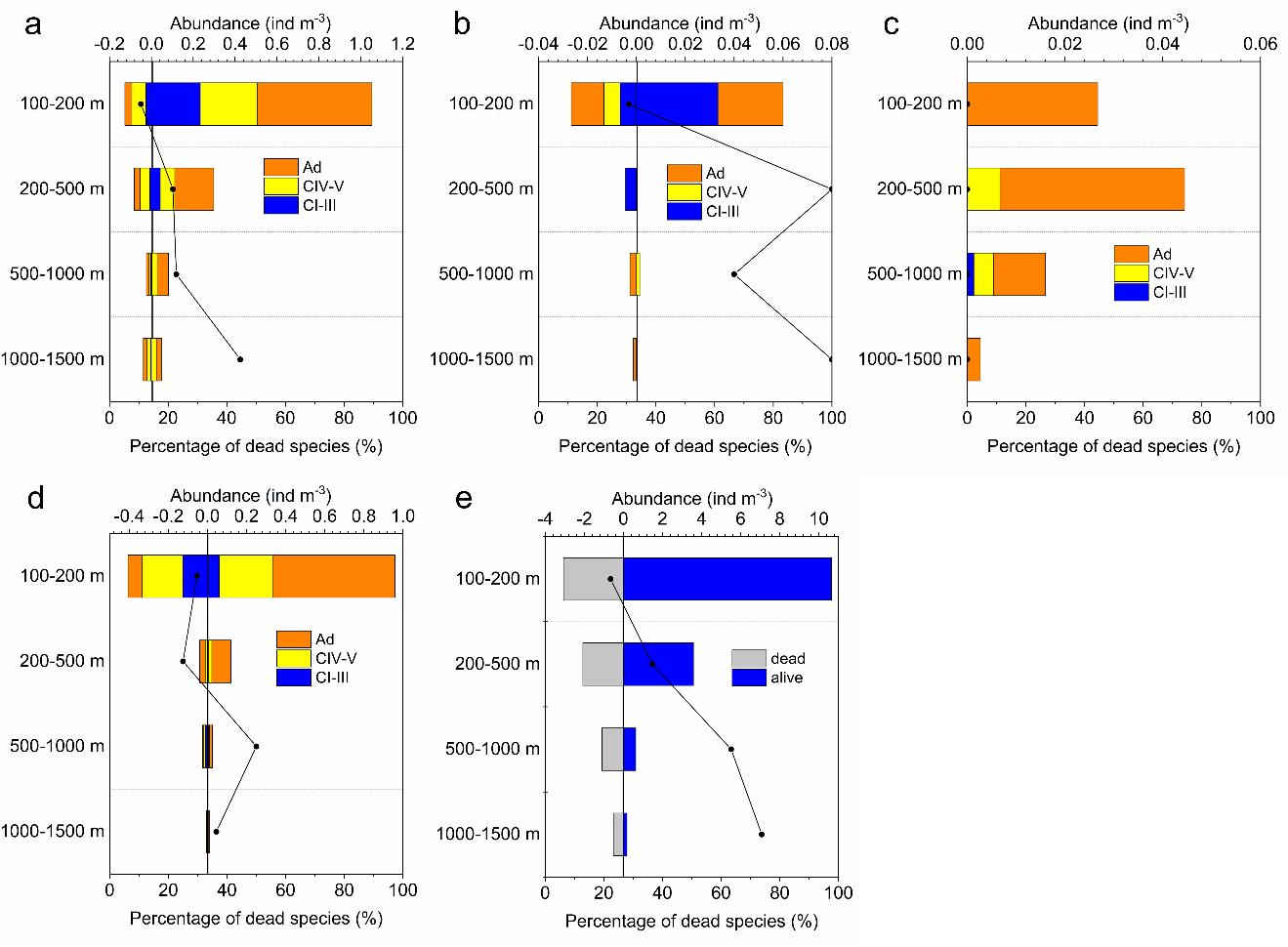Scientists Find High Proportion of Copepod Carcasses in Southern Ocean
The Southern Ocean contributes to the sequestration of CO2 and climate regulation through the biological carbon pump (BCP). As the link between phytoplankton and higher trophic levels, zooplankton play a significant role in the carbon pump of the Southern Ocean through feeding, egestion, coprophagy, coprorhexy, respiration, dial and seasonal vertical migration.
However, the contribution of passive sinking zooplankton to the Southern Ocean BCP has been largely overlooked. Zooplankton carcasses and their contribution to carbon export have received increasingly attention in food web studies of polar oceans.
Recently, the zooplankton research team form the Institute of Oceanology of the Chinese Academy of Sciences (IOCAS) provided the first report of the percentage of dead zooplankton species in different depth layers of the Southern Ocean.
The study was published in Deep-Sea Research II on Feb. 20.
Researchers found that most zooplankton carcasses were observed at the surface (100-200 m), while the proportions of dead individuals increased with depth, from 22% in the 100-200 m layer to 70% of the 500-1500 m layer. Both abundance and carbon biomass of passive sinkers decreased with depth.
"It is amazing that 22-70% of the caught copepods were dead, especially in summer when non-predatory mortality is usually thought to be low because of the high food supply. These values should be included in ecosystems models when estimating the role zooplankton and their carcasses play in biogeochemical cycles of the Southern Ocean," said YANG Guang, the first author of the study.
Compared with the substantial contribution of zooplankton carcasses to particulate organic carbon (POC) flux (nearly 90%) reported in Arctic Ocean, the contribution of passive sinkers to POC concentrations in this study and previous research (< 1%) could be negligible.
"This indicates that the POC fluxes are mainly correlated with large fast-sinking materials like faecal pellets and carcasses, while the concentration of POC is mostly associated with suspended and slow sinking materials owning to particle fragmentation by zooplankton feeding in the Southern Ocean," the corresponding author LI Chaolun added.
Carcasses are the most understudied aspect of the zooplankton-mediated BCP and are yet under-represented in carbon flux calculations and biogeochemical models. The current research fills a knowledge gap, especially in the Southern Ocean. "Exploring the occurrence of zooplankton carcasses and their contribution to POC flux will improve our understanding of population dynamics and specific ecological processes in attenuation of vertical POC flux," said YANG.
This work was supported by National Science Foundation of China.

Abundance of Calanoides acutus (a), Calanus propinquus (b), Metridia gerlachei (c), Rhincalanus gigas (d) and small copepods (e) caught alive (positive values) and dead (negative values) in each depth layer. The proportion of dead individuals in each depth is marked with red line. Ad: Adult, CIV-V: Copepodite stages IV-V, CI-III: Copepodite stages I-III.
Guang Yang, Wenxiu Mou, Xiaoli Chen, Zhiqiang Xu, Yanqing Wang, Chaolun Li. (2022). Vertical occurrence of copepod carcasses in the Cosmonaut Sea during austral summer. Deep-Sea Research II, doi: 10.1016/j.dsr2.2022.105051.
YANG Guang
Institute of Oceanology
E-mail: yangguang@qdio.ac.cn
(Editor: ZHANG Yiyi)